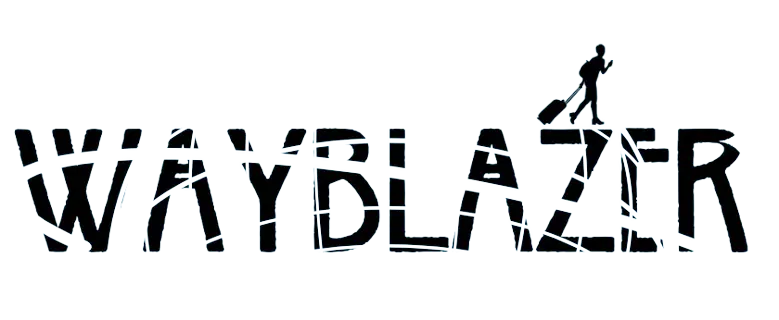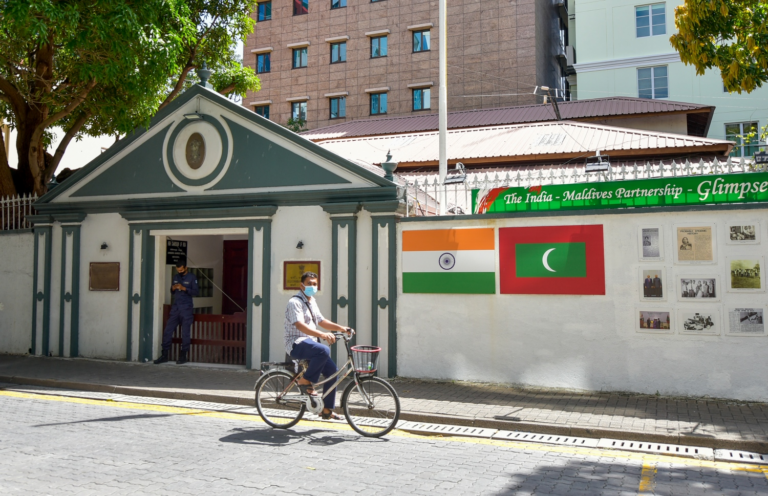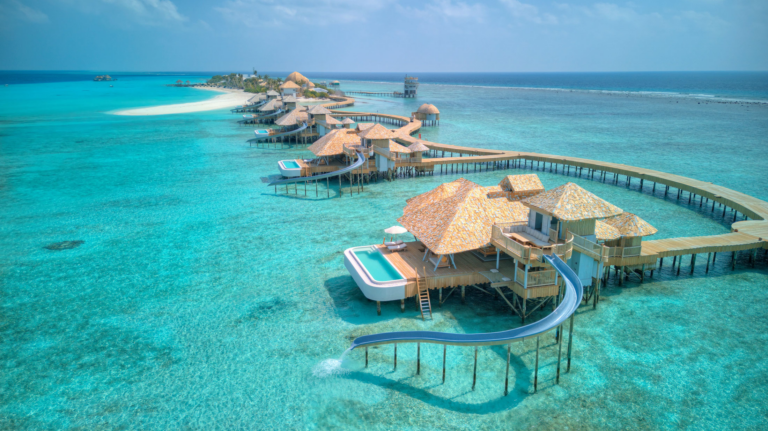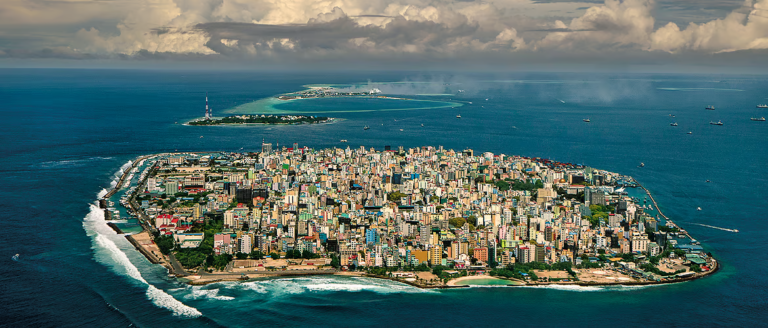The “Sea of Stars” is a breathtaking natural phenomenon that illuminates the beaches of the Maldives at night.
This spectacle is not tied to a specific location, but rather occurs when bioluminescent plankton cause the waves and shore to sparkle with an enchanting blue glow, as if the sea were filled with twinkling stars.
Imagine strolling along a dark beach after sunset and suddenly noticing the lapping waves light up with countless shimmering dots, transforming the ocean into a mesmerizing cosmic display.
The ethereal scene looks like a mirror of the night sky, with luminous blue pinpricks swirling and dancing across the moving water and washing up on the sand. It’s a surreal and magical experience that leaves viewers in awe of the natural wonders our planet can produce.
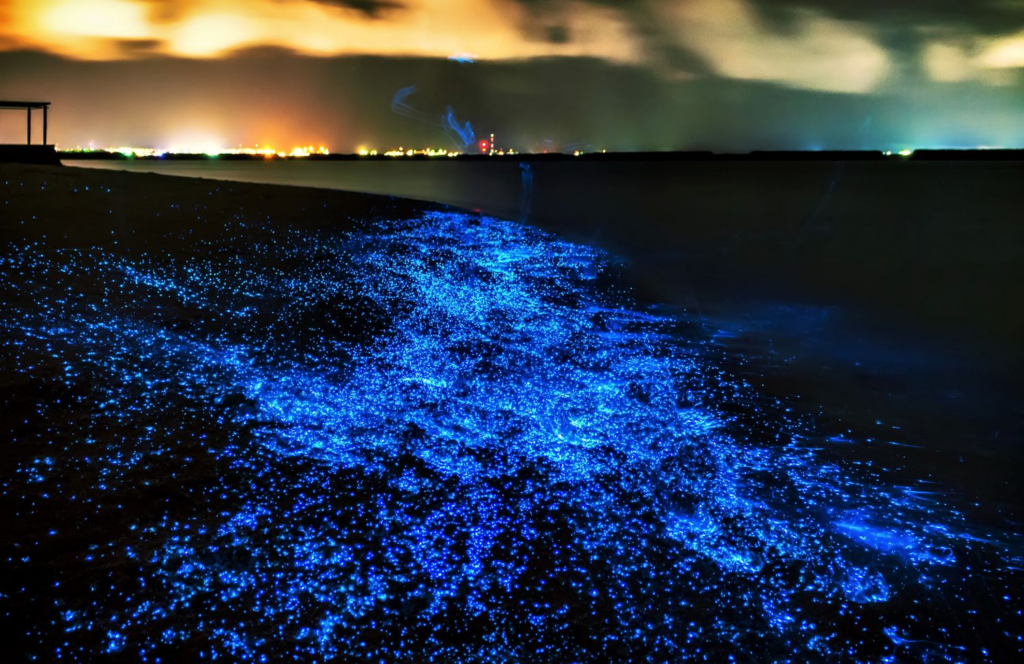
What is the Sea of Stars in Maldives?
The Sea of Stars is a truly dazzling sight, but it’s important to note that it refers to the glowing bioluminescent plankton and is not an actual fixed place you can visit.
The phenomenon can potentially occur anywhere in the Maldives’ waters if the right conditions align to spur the plankton’s light show.
So while you can’t find the “Sea of Stars” on a map, you can still seek out this marvelous natural wonder across the islands of the Maldives.
The Science Behind the Sea of Stars
The secret behind the Maldives’ shimmering seas lies in tiny marine organisms called dinoflagellates.
These microscopic plankton are the main culprits causing the wondrous bioluminescence.
When disturbed by motion, such as waves breaking or someone swimming through the water, the dinoflagellates emit a fleeting blue light, creating the stars that sparkle in the sea. Bioluminescence occurs through a chemical reaction inside the plankton’s cells.
They contain luciferin, a molecule that produces light when it reacts with oxygen. Normally, the plankton glow very faintly, but when agitated, a burst of luciferin flows into the cells and combines with oxygen, catalyzed by the enzyme luciferase. This reaction generates the signature blue radiance that illuminates the surrounding water so brilliantly.
The dinoflagellates don’t shine continuously, only flashing briefly when stimulated. Each individual plankton’s glow lasts mere milliseconds. However, their sheer abundance in the water creates the illusion of a constant shimmer, especially when the waves keep triggering them.
The bioluminescence is most visible at night when the darkness contrasts against their vivid blue light. Fascinatingly, the plankton’s bioluminescent abilities are thought to serve as a defense mechanism.
The burst of light may startle predators or attract even larger creatures to eat would-be predators. The light could also act as a burglar alarm, causing a commotion to draw attention to attackers.
So while the Sea of Stars appears purely magical to human eyes, for the plankton, their glow is a matter of life or death.
Where and When to See the Sea of Stars in Maldives
The Sea of Stars can theoretically materialize anywhere in the Maldives, as long as the bioluminescent plankton are present in the water.
However, the phenomenon has been most famously spotted and photographed around Vaadhoo Island in the Raa Atoll.
As word spread about Vaadhoo’s glittering shores, more travelers began seeking out the island specifically to witness the sea sparkle.That said, the Sea of Stars is not unique to Vaadhoo.
The plankton blooms can occur throughout the Maldives. Some other islands known for good sightings include:
- Mudhdhoo Island in Baa Atoll
- Dhaalu Atoll
- Haa Alif Atoll
- Adaaran Prestige Vadoo resort island
The optimal time to glimpse the Sea of Stars is during the summer months, particularly from June through October.
The plankton thrive in warm water, so they’re more abundant during this period. Aim to go during a new moon when the night is darkest to see the glow most vividly.
Avoid periods with a bright full moon that can drown out the bioluminescence.Keep in mind that the Sea of Stars is a fickle phenomenon that’s tricky to predict. Some years see a stronger showing than others.
The intensity of the glow can vary significantly from night to night based on the plankton population at the time.
There’s no guarantee you’ll encounter a strong Sea of Stars even if you visit during peak season. It all depends on the whims of nature, which is part of what makes the sight so special when you do get lucky enough to experience it.
Tips for Viewing the Sea of Stars
To give yourself the best odds of spotting the bioluminescent plankton, head out to the beach at night after the sun has fully set.
Venture away from artificial light sources like beachfront resorts or street lamps. The darker the environment, the more clearly the plankton’s glow will stand out.
Allow some time for your eyes to adjust to the low light.You can simply stroll along the waterline and watch for the glow, but one of the most immersive ways to experience the Sea of Stars is to get in the water.
Wade out into knee-deep water or go for a swim. As you move around, you’ll disturb the plankton and set off their shimmering light.
The water will sparkle with every splash and ripple, surrounding you in a galaxy of blue stars.Some other tips to maximize your Sea of Stars encounter:
- Book a night boat tour to see the bioluminescent waters away from shore
- Stay at a resort with an overwater bungalow to watch for glowing waves from your room
- Avoid shining flashlights or taking flash photos, which can disrupt the plankton
- Use a tripod and long exposure photography to capture the phenomenon on camera
Is it Safe to Swim in the Sea of Stars?
Yes, taking a dip in the shimmering Sea of Stars is completely safe. The bioluminescent plankton are harmless to humans.
They don’t sting, bite, or secrete any toxins. You can swim through clouds of them without any ill effects. In fact, the plankton’s glow tends to be brightest when they’re agitated, so swimming is the perfect way to activate their shine.
The only risks to consider are the general hazards of swimming in the ocean at night, such as poor visibility and currents.
Always exercise caution, never swim alone, and be mindful of your surroundings. But don’t let fear stop you from immersing yourself in the magic of the luminous waters.
Places to Stay and Visit Near the Sea of Stars
The Maldives is renowned for its luxurious resorts, many of which make excellent bases for viewing the Sea of Stars. Some top-rated resorts in areas known for bioluminescence include:
- Adaaran Prestige Vadoo: This 5-star resort offers 50 water villas with butler service on its own private island. Rates start around $400 per night.
- Reethi Beach Resort: Located in Baa Atoll, home to plankton-rich Hanifaru Bay. Beachfront villas start at $200 per night.
- Dusit Thani Maldives: Upscale resort in the Baa Atoll UNESCO Biosphere Reserve. Rates begin around $700 per night for beach villas.
- Meeru Island Resort: Sprawling resort in the North Male Atoll with rooms starting at $300 nightly. Easily accessible from the international airport.
Beyond resort hopping and watching for the Sea of Stars, other bucket-list activities in the Maldives include:
- Snorkeling or scuba diving to see manta rays, whale sharks, and coral reefs
- Visiting the glowing beaches of Mudhdhoo Island in Baa Atoll (“Mudhdhoo” translates to “Shining Island”)
- Island hopping to discover picturesque sandbars and lagoons
- Touring the bustling markets and mosques in the capital city of Malé
To reach the Maldives, fly into Velana International Airport in Malé.
From there, you’ll transfer to your resort either by speedboat, seaplane, or domestic flight, depending on the distance. Many resorts can arrange transportation for you.
Frequently Asked Questions
Is the Sea of Stars a specific place?
No, the “Sea of Stars” refers to the general phenomenon of bioluminescent plankton glowing in the Maldives’ waters at night. It’s not a single fixed location.
What time of year is best to see the bioluminescent plankton?
The peak season is from June to October, when the plankton are most abundant. The darker period around a new moon offers the best viewing conditions.
How long does the glow last?
Each individual plankton’s glow lasts just a fraction of a second when disturbed. But the collective effect can make the sea appear to sparkle continuously, especially in waves.
Can you see the Sea of Stars every night?
No, the phenomenon is unpredictable and depends on the concentration of bioluminescent plankton at the time. Some nights have a fantastic showing, while others may have little visible sparkle. Sightings can vary from year to year and even from hour to hour.
Where in the Maldives is the Sea of Stars visible?
The glowing plankton could potentially appear anywhere in the Maldives’ waters. However, some notable locations include Vaadhoo Island, Mudhdhoo Island, and Adaaran Prestige Vadoo resort.
Can you swim in the Sea of Stars? Is it safe?
Yes, it’s safe to swim in the bioluminescent sea. The plankton don’t pose any threat to humans. In fact, swimming is an excellent way to experience the glow up close as your movement stimulates the plankton to shine.The Sea of Stars is undoubtedly one of the most breathtaking sights the Maldives has to offer. This elusive natural wonder ignites a childlike sense of awe and enchantment in all who are lucky enough to witness it. Though the phenomenon can’t be predicted with certainty, if you find yourself in the Maldives, be sure to spend some time stargazing into the shimmering waves, and you just might be treated to a Sea of Stars show you’ll never forget.
